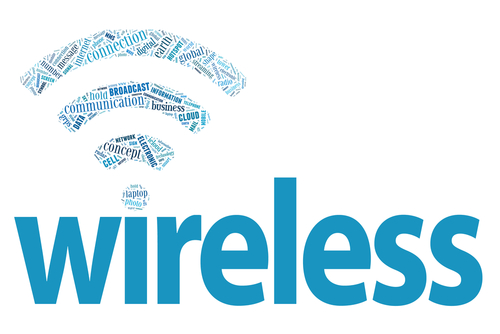A short while ago we took a look at the next generation of Wi-Fi, which will operate at 60 GHz (current Wi-Fi operates at 2.5 GHz and 5 GHz) and deliver more than 10x bandwidth performance improvements, from today's high of 600 MBPS to 7 GBPS. This next generation will offer substantial improvements in the home for those of us willing to pay premium prices for the latest and greatest. In the office, however, the advantages of this next generation will be substantial, and we anticipate early and rapid adoption.
Even as this next generation of true Wi-Fi continues to evolve and move towards market reality, there is also an entirely new technology moving forward that will co-exist with next generation Wi-Fi. Some have opted to label this new wireless environment "Super Wi-Fi" but in truth it is not Wi-Fi technology but an emerging technology that makes use of what is referred to in the telecommunications industry as "white spaces" spectrum.

Image via Shutterstock
This is spectrum that is currently either being significantly underused or not used at all by broadcast TV operators. Toward the end of 2011, the Federal Communications Commission (FCC) - in spite of opposition from the broadcasting community - came around to giving new players in the space the go-ahead to build technology around the spectrum for use as a new wireless data channel.
Most recently, Spectrum Bridge, a company that plays in the Super Wi-Fi space and seeks to act as an innovation driver for OEMs who are likely to get in the game, came up with a new program to help OEMs navigate the FCC approval process for white space certification. This is an important next step to transitioning Super Wi-Fi to real products. This scenario adds a non-trivial stamp of reality to Super Wi-Fi that hadn't existed before.
Those companies interested in Super Wi-Fi, may find it of interest to note that the Super Wi-Fi Summit, collocated with ITEXPO West 2012, is taking place Oct. 2-5 2012, in Austin, TX. The Summit will take a deep dive into the entire set of issues surrounding Super Wi-Fi.
The AIR.U (also known as the Advanced Internet Regions University) consortium is a university group that is already moving forward to deploy white spaces-based broadband. The consortium will be focusing almost exclusively on serving rural campuses that have traditionally lacked reliable wide area wireless coverage, and that have not been able to afford the services of Wi-Fi hotspot access point providers (such as Aruba).
Super Wi-Fi will therefore find its largest niche in larger scale campus settings where wireless broadband alternatives are currently not available. This means that Super Wi-Fi (or whatever it may actually end up being called once real production capabilities are in place and real products emerge) won't actually compete with real Wi-Fi. There is a clear niche here, at least for initial launch.
It remains to be seen whether or not Super Wi-Fi might eventually downscale for use in the home, where it would in fact compete with both today's true Wi-Fi environments as well as the emerging next generation of true Wi-Fi. If it does, it won't be any time soon, but it will certainly set off some interesting fireworks down the road.
Want to learn more about the impact and potential future of White Spaces? Then be sure to attend the Super Wi-Fi Summit, collocated with ITEXPO West 2012 taking place Oct. 2-5 2012, in Austin, TX. Stay in touch with everything happening at Super Wi-Fi Summit. Follow us on Twitter.
Tony Rizzo has spent over 25 years in high tech publishing and joins MobilityTechzone after a stint as Editor in Chief of Mobile Enterprise Magazine, which followed a two year stretch on the mobile vendor side of the world. Tony also spent five years as the Director of Mobile Research for 451 Research. Before his jump into mobility Tony spent a year as a publishing consultant for CMP Media, and served as the Editor in Chief of Internet World, NetGuide and Network Computing. He was the founding Technical Editor of Microsoft Systems Journal.Edited by
Brooke Neuman  QUICK LINKS
QUICK LINKS